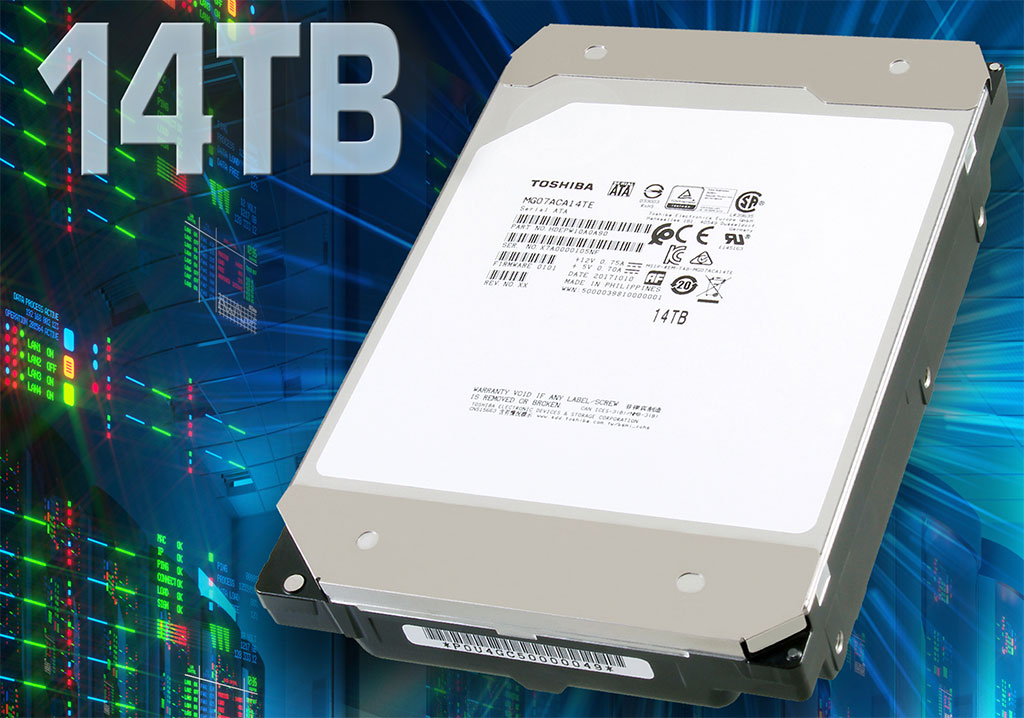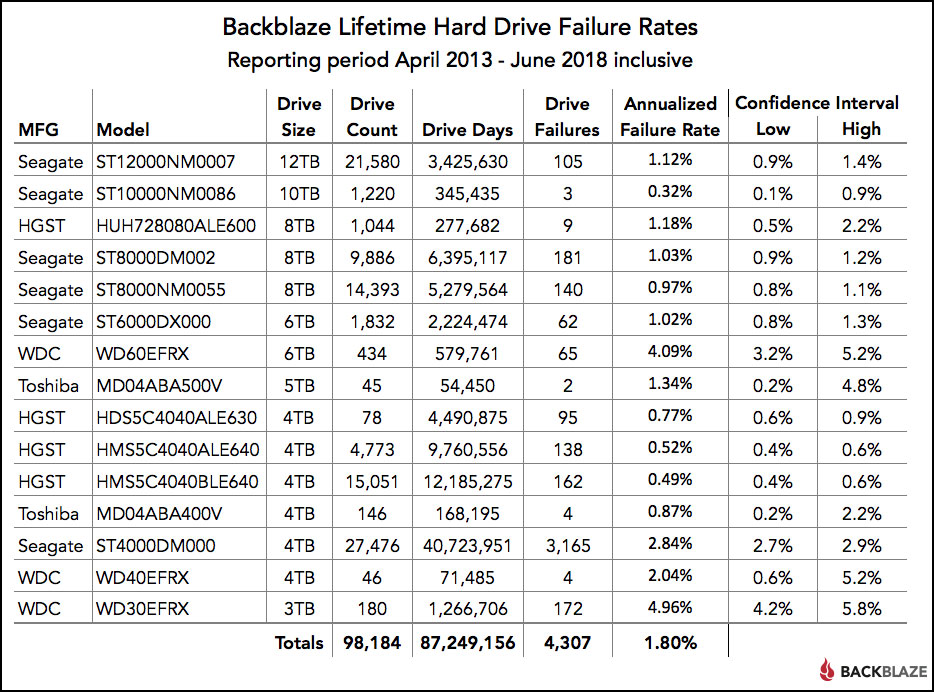So far, so good for newly deployed 14TB HDDs in Backblaze’s latest reliability report
Capacious hard drives are off to a promising start in Backblaze's cloud data pods.

Little by little, cloud backup provider Backblaze has been upgrading its storage pods with larger capacity hard drives, and so far things have been going smoothly. In several previous reliability reports the company published, 8TB, 10TB, and 12TB models have proven durable. More recently, Backblaze added some 14TB HDDs to the mix, and those are off to strong starts as well.
It's still early to make any kind of definitive judgement, but of the 20 Toshiba 14TB (model MG07ACA14TA) it added in the second quarter, not a single one has failed so far. They've only been in service for three weeks though, so the next reliability report will offer a better (albeit still limited) picture.
Even though it's early in the game, it's obviously far better to see these newly deployed drives get up and running without a hitch, versus one or more failures. It's pretty remarkable when you think about all the moving parts—Toshiba's 14TB drives feature nine platters inside.
These are Toshiba's first helium-filled HDDs, introduced at the end of last year. At the time, Toshiba noted it was the only company offering a nine-platter drive with 18 heads, with each platter having around 1.56TB of storage. As far as we know, that's still true. It's also interesting that Toshiba hasn't turned to shingled magnetic recording (SMR) like its competitors have.
"While enterprise server and storage customers realize that shingled magnetic recording technology can improve HDD capacity, the adoption of SMR HDD products into server and storage systems is a transition that will take several years," said John Rydning, Research Vice President for hard disk drives at IDC. "Toshiba’s new helium-sealed enterprise HDD is the world’s first 14TB of storage capacity using conventional rather than shingled magnetic recording technology, giving enterprise customers the highest capacity HDD available in the market today for existing server and storage system architectures."

As to the other higher capacity HDDs in Backblaze's deployment, annualized failure rates range between 0.32 percent (Seagate's 10TB HDD) to 1.18 percent (HGST's 1.18 percent). That's good news, as these drives have been in place longer than the 14TB models.
"The combined AFR for all of the larger drives (8-, 10- and 12 TB) is only 1.02%. Many of these drives were deployed in the last year, so there is some volatility in the data, but we would expect this overall rate to decrease slightly over the next couple of years," Backblaze says.
The biggest gaming news, reviews and hardware deals
Keep up to date with the most important stories and the best deals, as picked by the PC Gamer team.
The drive with the highest annualized failure rate is Western Digital's 3TB WD30EFRX at 4.92 percent, followed by WD's 6TB WD60EFRX at 4.09 percent.
Backblaze's data also indicates there is little different in reliability between enterprise and consumer drives, in terms of failure rate. Enterprise drives failed slightly less often, but not much—the lifetime AFR for its 8TB enterprise drive stands at 0.97 percent, versus 1.03 percent for 8TB consumer drives.
Paul has been playing PC games and raking his knuckles on computer hardware since the Commodore 64. He does not have any tattoos, but thinks it would be cool to get one that reads LOAD"*",8,1. In his off time, he rides motorcycles and wrestles alligators (only one of those is true).


